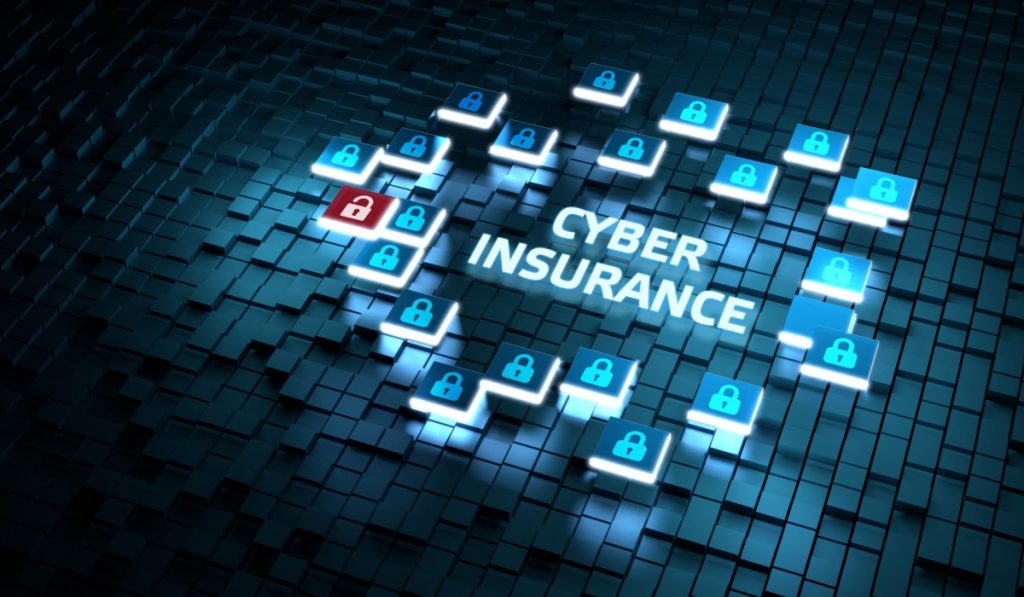Highlights:
- The costs associated with resolving cybercrime on the business scene are rising. They are projected to hit USD 10.5 trillion, annually by 2025.
- The first-party coverage, a type of cyber insurance, pays for the company’s costs associated with investigating and amp; fixing a cybercrime and recovering and restoring any lost data.
Every day, news bureaus report on yet another ‘major cyberattack’, ‘data leak’ or other form of hacking. There was a significant increase in cybercrime in 2022 and the projections for 2023 aren’t promising either.
As a result, an increasing number of companies are strategizing and pondering on how they can lower their vulnerability to cyberattacks.
There’s only one answer to their question – Cyber Insurance.
Cyber Insurance is a type of commercial property insurance that covers losses incurred because of cybercrimes like hacking, data breaches and other similar events.
A growing number of companies are investing in cybersecurity solutions and cyber insurance to guard against the potentially disastrous implications of a data breach.
Hence, it is imperative that we know how cyber insurance works, know its types and more.
Cyber insurance essentially shields an organization against cyberattacks and security breaches. The key advantages of getting cyber insurance are that it buffers the business against the impact in case of a cyber incident and also covers sudden financial damages.
But a cyber insurance does not necessarily cover everything. Every firm does require its own basic security information framework and an event management platform – with total data visibility and control.
When signing up for cyber insurance, business firms must first seek to understand what is and isn’t covered under the insurance.
Your cyber insurance company can support your business during cyberattacks. However, cybersecurity is essentially your company’s duty. This isn’t solely the insurer’s obligation!
An effective security automation, orchestration and response platform that links people, processes and technology to manage and simplify security operations can actually prevent security leaks before they turn into catastrophic business data breaches.
Understanding the mechanism of cyber insurance
Almost all companies that sell commercial property and liability insurance, also sell cybersecurity insurance.
Typically, this insurance will protect a business from losses that have an immediate and direct effect on the insured entity. This is also known as “first-party coverage.” Moreover, a cyber insurance also covers losses sustained by third parties because of the breach or an untoward event in network security.
Opting for cyber insurance pays for the affected company’s costs associated with investigating and fixing a cybercrime and recovering and restoring any lost data.
Not only does it compensate for lost profits due to the company’s closure but it also pays for the damage control, notification and the ransom paid to stop the hackers who stole from the business.
Companies are responsible for safeguarding their clients’ sensitive data, including financial and medical records. They risk legal repercussions if this data is compromised and made public. Legal defense against GDPR breach claims, crisis messaging, a digital forensics team and the expense of setting up credit monitoring and a call center for affected parties are all covered by a cyber risk insurance.
The different types of insurance
Just like the different types of health insurance, we have two primary types of cyber insurance:
- First-Party Cyber Insurance and
- Third-Party Cyber Insurance
First-party cyber insurance
First-party Cyber Insurance plans are made to cover the losses, expenses and inconveniences incurred by the business owner because of a security breach. Here are a few examples:
Data Loss: A first-party cyber insurance policy may cover the expenses incurred due to lost data and its subsequent restoration. Repairing or replacing broken IT infrastructure and other company assets, such as digital records, could add to this hefty sum.
Theft or Fraud: This policy will compensate for everything damaged due to theft or fraud, that compromises your data. It could also include theft or fraud resulting from dishonesty or money transfers and managing the associated risks.
Extortion or Blackmail: When a company refuses to pay a ransom, cybercriminals often threaten to destroy its intellectual property unless compensated. The policyholder might pay up the cash to prevent further damage to their good name or to facilitate evidence collection in case of legal prosecution.
Forensic Work: This policy funds forensic investigations. It covers the cost of all technical and legal assistance needed to comply with the norms of the presiding court.
Business Interruption: First-party coverage pays for the insurance company’s costs associated with investigating and amp; fixing a cybercrime and recovering and restoring any lost data.
Third party insurance
This includes:
Client Privacy: The costs associated with protecting sensitive customer information, such as financial records, are covered by this type of insurance policy in the event of a data breach.
Regulatory Coverage: The regulatory coverage includes all technical and forensic services performed in response to a government order or this insurance policy can also cover requests. When the government is invested in determining the root causes of an incident to prevent similar ones in the future, these funds may be used to cover the costs associated with investigating the incident. It could also reimburse the policyholder for any penalties incurred due to an investigation.
Litigation coverage: All legal fees, settlements, fines and penalties paid as a result of an incident are covered by this clause.
Media Insurance: The cost of reaching out to the media following a cyber incident is included in this cost cap. Insurance premiums may need to be paid in the case of a copyright violation, but this can help keep the company from being held legally responsible for any damages.
Communications and Notification: This accounts for the time and money spent informing those affected by the incident and your response strategy. A company’s stakeholders can range from the customers and staff to the business partners and the public.
Credit Monitoring and Review: This policy will reimburse the policyholder for the time spent on anti-fraud measures, such as credit monitoring and review.
Emergency and Crisis Management: These policies cover the costs associated with responding promptly to sudden or unforeseen events, such as putting up warning signs after a security breach.
Cyber insurance adoption is on the rise
Neither businesses nor insurers could have anticipated the 50% year-over-year surge from cyberattacks that occurred in 2021. Over the past few years, a growing number of cyberattacks have promoted the booming sector.
Costs associated with cybercrime are rising and are projected to hit USD 10.5 trillion annually by 2025. It is projected that by 2025, the cyber insurance industry will be worth USD 20.6 billion, which is a significant increase from its current value.
What effect do these numbers have on your cyber security precautions?
Also, did you know that ransomware has become the primary cause of cyber insurance claims?
As you might expect, as cybercrime and ransomware rise, the cyber insurance firms don’t want to be left holding the fort without safeguarding themselves. As a result, the cyber insurance pricing is also seen taking a hike.
Some cyber insurers have left the cybersecurity insurance market after miscalculating risk in 2019 and 2020, allowing those who remained to capitalize on the increasing demand while maintaining high premiums.
Additionally, to lower their risk, cyber insurance providers are putting more restrictions on cybersecurity parameters before providing coverage to clients. Insurers are closely monitoring how well organizations are adhering to security best practices including access control, multi-factor authentication and the concept of least privilege.
Why do you need cyber insurance again?
Protecting Personally Identifiable Information, also known as PII, such as customers’ names, addresses and credit card numbers, is crucial if your company deals with any of this information.
If your customers’ PII is leaked, stolen or lost, the regulatory agencies may subject you to hefty fines. As a result, you will need to take measures to safeguard yourself financially!
Cybersecurity insurance can be a lifeline for a firm that has suffered a data breach, especially as the costs of defending against lawsuits, regulatory actions and claims mount.
Insurance against data breaches and cyberattacks is essential, but it is equally crucial to implement the best security practices to safeguard your company.
Each preventative step should already be in place before you file a claim!
Here is a list of the ready best practices your company should follow:
- In the event of a cyberattack, a firewall is often the first line of protection.
- Small businesses often run on word of mouth and gut feelings, but when it comes to cyber security, it’s essential to document your protocols.
- All employees accessing the network should be educated on your company’s cyber security best practices and policies.
- Make sure to back up all your cloud-based data. Check your backup often to ensure it is working correctly and that you will always have the most recent copy if you ever need it.
- All employee devices that connect to the company network must have ‘password’ protection.
In conclusion
Cyber insurance is relatively new, but it has quickly become an integral aspect of any comprehensive business safety plan.
As companies advance into the digital age, they must abandon the concept that cyber insurance is merely a safety net in an emergency and instead see cyber policies as an essential part of their overall security framework.














